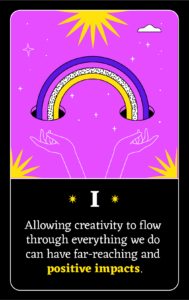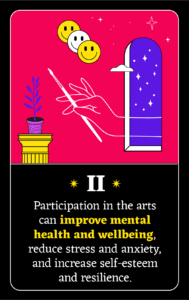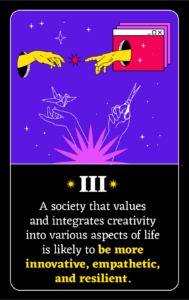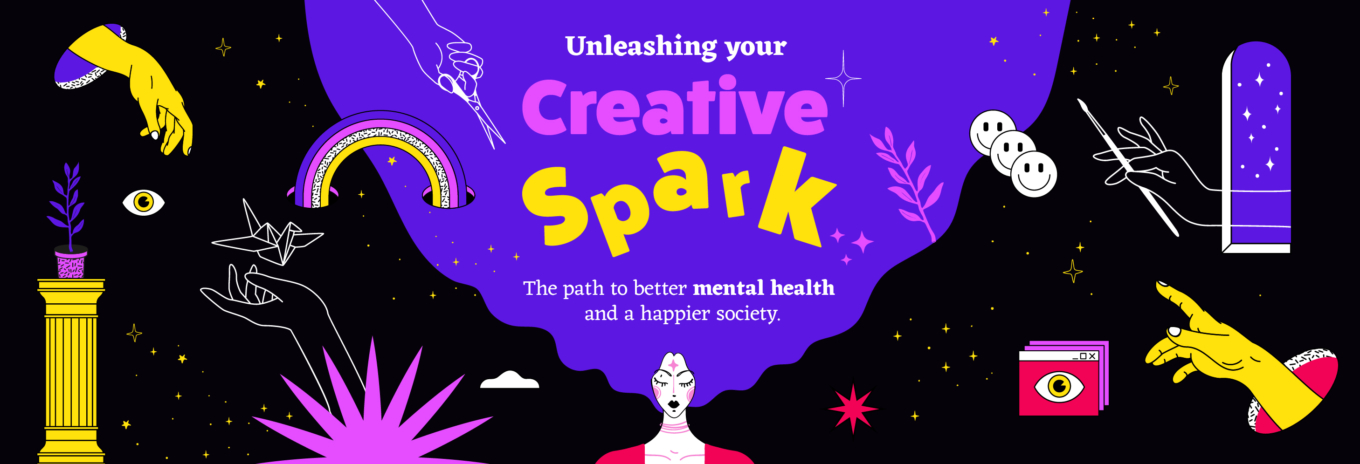In a fast-paced and demanding world, it’s easy to get caught up in the daily grind and forget the vibrant splash of colours that creativity brings to our lives.
Creativity isn’t just about painting a masterpiece or writing a novel; it’s about expressing yourself, solving problems innovatively, and adding a unique touch to everything you do, whether at work or in your personal life. And here’s the best part: making creativity a staple in your life can significantly boost your mental health and, by extension, contribute to a happier, healthier society.
The magic of creativity 
When we talk about creativity, it’s essential to understand that it’s not a luxury or an add-on; it’s a necessity. Engaging in creative activities has been linked to lower stress, anxiety, and depression levels, offering a therapeutic outlet for emotions and thoughts. Studies have shown that individuals who participate in creative and cultural activities report higher levels of happiness and satisfaction in life. This isn’t just about arts and crafts; it includes various activities like gardening, cooking, writing, or even developing creative solutions at work. Allowing creativity to flow through everything we do can have far-reaching and positive impacts.
Social prescribing: A new horizon
The concept of social prescribing is an exciting development that recognizes the benefits of creativity on mental health. This innovative approach, gaining ground in the UK’s healthcare system, allows doctors to prescribe non-medical activities, such as art classes, community gardening, or music sessions, to boost patients’ mental health. It acknowledges that our wellbeing is influenced by various social, economic, and environmental factors, offering a holistic solution to health care.
Social prescribing has shown promising results. According to NHS England, engaging in such prescribed activities can lead to improved quality of life, reduced anxiety and depression levels, and decreased reliance on medication. It represents a significant shift towards a more integrated approach to health and wellbeing, emphasizing prevention and the healing power of creativity and community.
Creativity and mental health: A closer look 
The statistics are telling: a recent report highlighted that engaging in just a few hours of creative activities each week can significantly improve mental health and overall wellbeing. In the UK, where one in four people will experience a mental health problem each year, incorporating creativity into our daily lives could be a game-changer. The Mental Health Foundation emphasizes the role of creative activities in managing and recovering from mental health issues, suggesting that they can act as a form of self-care and resilience-building.
Some more evidence
- A survey conducted by the charity Mind found that 71% of people with mental health problems reported that engaging in creative activities, such as art, music, and crafts, helped them manage their mental health.
- A study by the American Journal of Public Health found that engaging in creative activities can reduce the risk of cognitive decline in older adults by up to 73%.
- According to a report by the World Health Organization, participation in the arts can improve mental health and wellbeing, reduce stress and anxiety, and increase self-esteem and resilience.
- A survey by the Arts Council England found that 63% of people who engaged in creative activities reported feeling happier, and 77% reported feeling more relaxed.
The ripple effect on society 
The benefits of embracing creativity extend far beyond individual health. A society that values and integrates creativity into various aspects of life is likely to be more innovative, empathetic, and resilient. Creative expression offers a way to connect with others, share experiences, and build stronger communities. By fostering an environment where people are encouraged to think creatively, we’re not just enhancing individual wellbeing but laying the groundwork for a more cohesive and supportive society.
Making it happen
So, how can we make creativity a part of our work and beyond? Here are some simple steps to get started:
- Set aside time for creative activities: Just as you would for exercise or meditation, schedule time in your week for creativity. It doesn’t have to be a big project; small, regular efforts can lead to significant benefits.
- Explore different mediums: Creativity comes in many forms. If painting or drawing isn’t your thing, try writing, dancing, cooking, or even brainstorming creative solutions to problems at work.
- Join a community: Whether it’s an art class, a choir, or a gardening club, being part of a community can enhance the enjoyment and benefits of creative activities.
- Embrace creativity at work: Encourage brainstorming sessions, flexible thinking, and innovative approaches to tasks and projects. Creativity in the workplace can lead to better problem-solving, improved team dynamics, and increased job satisfaction.
Final thoughts
Incorporating creativity into our daily lives and work is not just about personal fulfilment; it’s a vital strategy for improving mental health and building more vibrant, resilient communities and society.
By embracing and encouraging creativity, we can all contribute to a world where wellbeing is not just an aspiration but a reality. Let’s unlock the creative potential within each of us and witness the transformative power it holds for our minds, our communities, and our society.
Let’s make creativity a part of our lives and the heart of our wellbeing strategy.
By Alan Oram

















